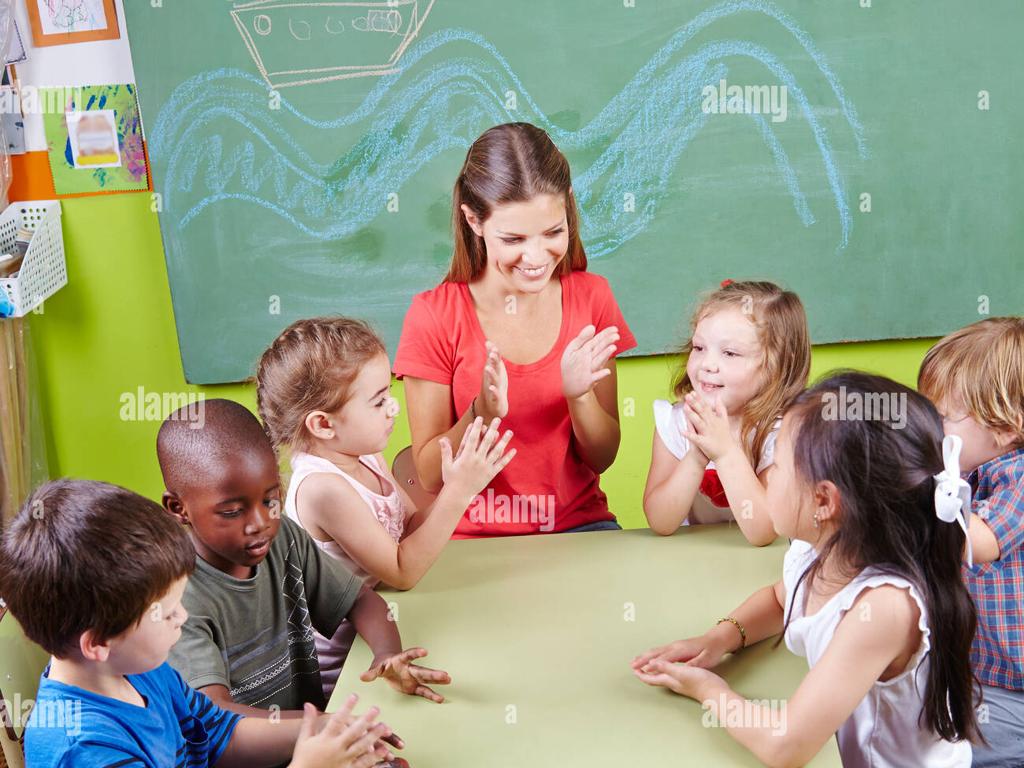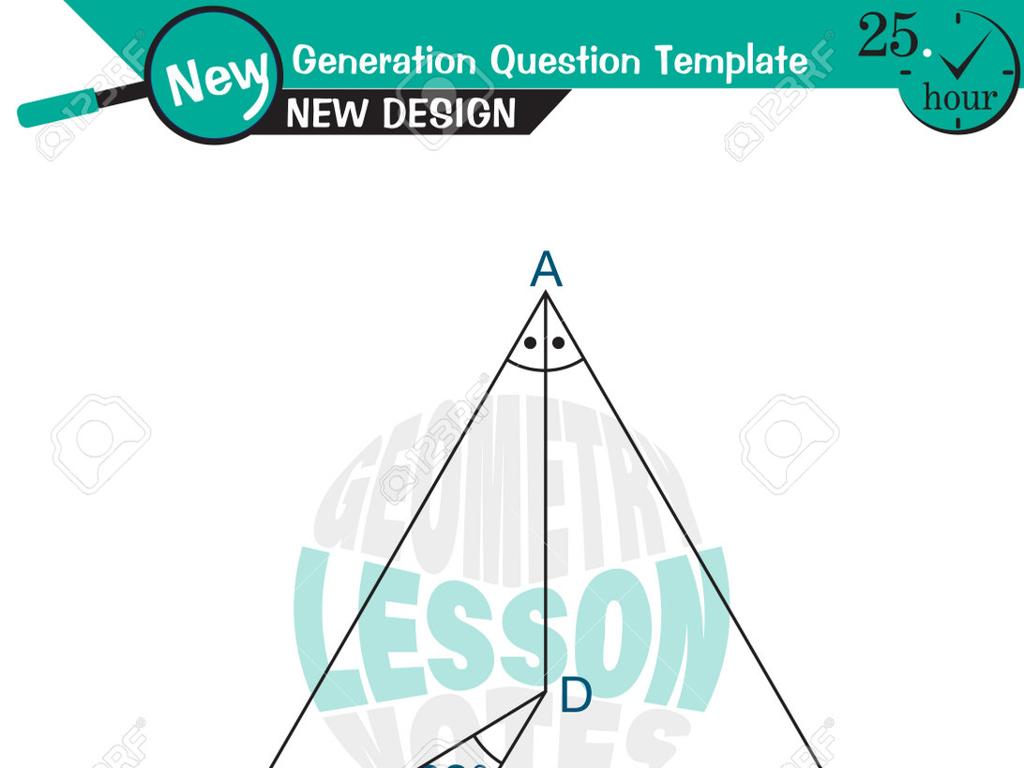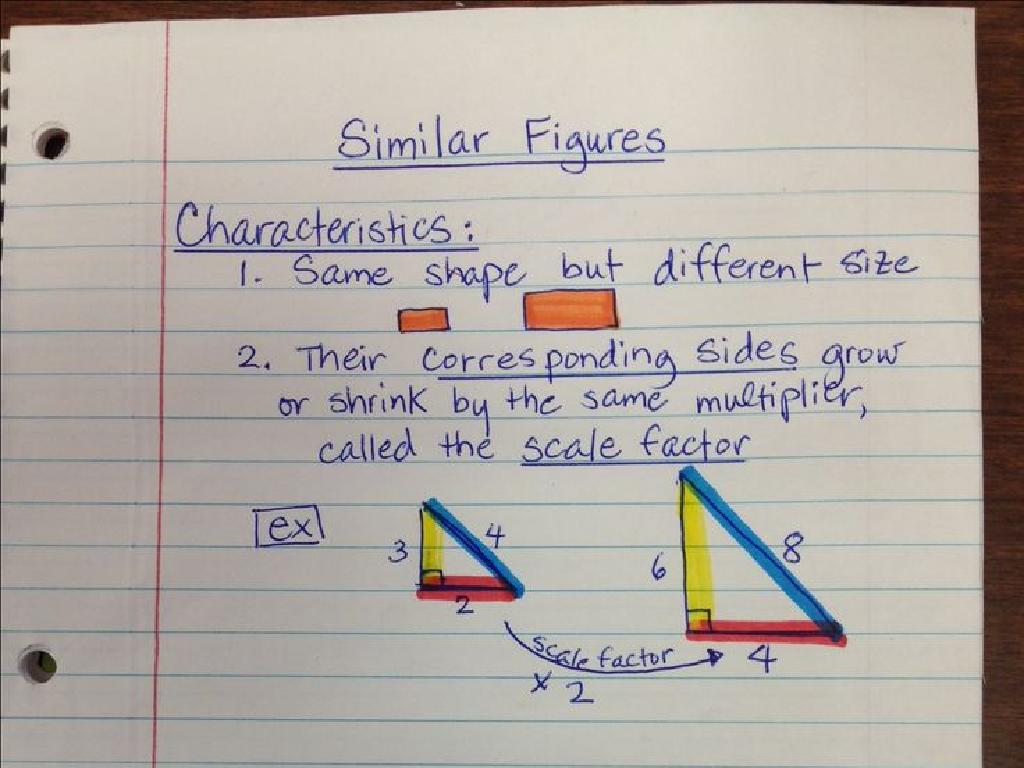Word Problems With Both Addends Unknown - Up To 10
Subject: Math
Grade: First grade
Topic: Addition And Subtraction Word Problems Up To 10
Summary: This first grade math lesson turns students into math detectives, solving addition and subtraction word problems with both addends unknown for totals up to 10. Learners practice identifying clue words, visualizing problems with counters or drawings, and explore multiple combinations that add to 10. Engaging stories and hands-on activities help students build critical thinking and foundational math skills. The interactive approach supports problem-solving confidence and aligns with Common Core standards.
Please LOG IN to download the presentation. Access is available to registered users only.
View More Content
Math Detectives: Solving Number Mysteries
– Become math detectives today
– Solve mysteries with numbers ≤ 10
– Find two numbers that add up to 10, like ? + ? = 10
– Use counting skills to find answers
– Count objects, fingers, or drawings to figure out the missing numbers
– Exciting number adventure awaits
|
In this class, we’re going to approach addition and subtraction as a fun detective game. The students will be introduced to word problems where both addends are unknown, and they will use their counting skills to solve these problems. Encourage the children to think of themselves as detectives who have to find the missing numbers (clues) that add up to 10. Provide them with simple, relatable scenarios where they have to figure out two parts of a whole. For example, ‘You have 10 apples, some are red, and some are green. If you have 6 red apples, how many are green?’ This approach will help them understand the concept of addition and subtraction in a fun and engaging way. Prepare to guide them through several examples and encourage them to use their fingers or objects to count and find the solutions.
Solving Word Problems: Both Addends Unknown
– Word problems are number stories
– Understand what the story asks
– What is the problem trying to find out?
– Search for clues in the story
– Clues like ‘altogether’ or ‘in total’ help us.
– Practice solving with examples
– Use simple problems like ‘3 + __ = 10’ to learn.
|
This slide introduces first graders to the concept of word problems where both addends are unknown. Emphasize that word problems are like stories that involve numbers, and our job is to figure out the missing pieces of the story. Encourage students to look for keywords or phrases that hint at addition or the total sum. Provide examples and guide them through the process of identifying the unknown addends. For instance, if there are 3 apples and some more apples that together make 10 apples, how many are the ‘some more apples’? Practice with similar problems to build confidence and understanding.
Key Words in Addition Word Problems
– Words that signal addition
– Look for words in problems that mean add
– ‘In all’ and ‘altogether’ examples
– When you see ‘in all’ or ‘altogether’, it’s time to add
– Practice finding clue words
– Let’s spot the words that tell us to add things up
– Understanding ‘total’ and ‘sum’
– ‘Total’ and ‘sum’ also mean everything added together
|
This slide introduces students to the concept of identifying key words in word problems that indicate an addition operation is needed. Emphasize the importance of understanding these clue words as they help in deciding the correct mathematical action to take. Provide examples and practice sentences to help students recognize these words. For instance, ‘Sally has 3 red balloons and 2 blue balloons. How many balloons does she have in all?’ Here, ‘in all’ suggests we need to add 3 and 2. Encourage students to look for these words in their practice problems and explain that knowing them will make solving word problems easier. Plan a class activity where students can work in pairs to find clue words in a set of simple word problems.
Adding Up to 10: Combining Groups
– Adding means combining groups
– Example with apples
– If you start with 3 apples and get 2 more, how many in total?
– Counting together to find the sum
– We’ll use counting to add 3 and 2 together
– Practice with different numbers
– Try adding 4 and 3, or 5 and 2, using your fingers or objects
|
This slide introduces the concept of addition as combining two groups to form a new group. Use everyday examples, like combining apples, to make the concept relatable for first graders. Encourage the students to participate by counting aloud together to find the sum of the two groups. After the example with apples, prompt the students to practice with different numbers, ensuring they understand that the process of addition remains the same regardless of the numbers used. Provide guidance on using fingers or objects to help them visualize the addition process. The goal is to build a strong foundational understanding of addition up to 10.
Subtracting Up to 10: Taking Away
– Subtraction means taking away
– When we subtract, we take some away from a total number.
– Example with oranges
– If you start with 5 oranges and give 2 away, how many are left?
– Count to find what’s left
– Use your fingers to count the remaining oranges after giving 2 away.
|
This slide introduces the concept of subtraction as ‘taking away’ to first graders. Start by explaining subtraction in simple terms, using the analogy of having a certain number of items and then giving some away. Use the example of oranges to make it relatable and tangible for the students. Encourage them to use physical objects or their fingers to count and visually see the subtraction process. This hands-on approach helps solidify the concept of subtraction. During the class, you can distribute objects to the students and let them practice subtracting by physically taking items away and counting what remains. This will prepare them for solving word problems with unknown addends.
Super Detective Work: Both Addends Unknown
– Understanding unknown addends
– Sometimes in math, both numbers we add are a mystery.
– Being math detectives
– Use clues in the problem to find the missing numbers.
– Example: Finding missing numbers
– If 5 friends are at a party and more come, making 10, how many joined?
– Practice makes perfect
|
This slide introduces the concept of solving addition problems where both addends are unknown, which can be a challenging but exciting part of first-grade math. Encourage the students to think like detectives, looking for clues in word problems to find the missing numbers. Start with an example they can relate to, like friends at a party, and guide them through the process of discovering the unknown addends. Provide ample practice problems and praise their efforts to build confidence. Remember, the goal is to make them comfortable with the concept of unknowns in addition.
Solving Word Problems: Unknown Addends
– Understand the total number
– Total animals in the room is 10
– Explore possible groups
– How many groups of cats and dogs can make 10?
– Use objects to visualize
– Use counters or drawings to represent animals
– Discuss different combinations
– There can be 1 cat and 9 dogs, 2 cats and 8 dogs, etc.
|
This slide introduces students to the concept of solving word problems with both addends unknown. The example problem involves animals, which is a relatable and engaging context for first graders. The goal is to find all possible combinations of cats and dogs that add up to 10. Encourage students to use physical objects like counters or to draw pictures to help them visualize the problem. Discuss with the class how many different combinations they can come up with, reinforcing the concept that there can be multiple correct answers. This activity will help develop their critical thinking and understanding of addition within 10.
Let’s Solve It!: Addition Mystery
– Use objects to solve problems
– Counters as cats and dogs
– If we have 3 cat counters, how many dog counters make 10?
– Explore combinations to 10
– Try 1 cat + 9 dogs, 2 cats + 8 dogs, and so on
– Practice with real examples
– Example: 4 cats and ? dogs = 10. Let’s find out!
|
This slide is designed to help first graders visualize addition problems where both addends are unknown. By using counters, students can physically manipulate objects to find combinations that add up to 10. This hands-on approach makes abstract concepts more concrete. Encourage students to try different combinations and to understand that there are multiple solutions to these problems. Provide guidance on how to systematically approach finding all possible combinations. During the activity, circulate the room to assist students who may struggle and to ensure they grasp the concept of addition with unknown addends.
Class Activity: Math Detectives
– Become math detectives with your partner
– Solve the mystery word problem together
– Search for clue words in the problem
– Clue words like ‘altogether’ or ‘in total’ hint at addition
– Use counters to find the answer
– Counters can be blocks or drawings to represent numbers
|
In this interactive class activity, students will pair up to tackle a word problem where both addends are unknown. The goal is to foster collaboration and critical thinking as they decipher the problem together. Provide each pair with a word problem that does not exceed the sum of 10. Encourage them to discuss and look for keywords that indicate an addition or subtraction operation. Provide physical counters like blocks or use drawings to help them visualize the problem. As they work through the problem, circulate the room to offer guidance and ensure they are on the right track. Possible activities include: 1) Using story-based problems that relate to their daily experiences, 2) Creating a word problem together and then swapping with another pair, 3) Drawing out the problem scenario, 4) Acting out the problem with toys or objects, 5) Writing the number sentence that represents the problem.
Becoming Math Detectives: Conclusion
– Celebrate your problem-solving skills
– Practice is key to becoming a math expert
– Regular practice helps us solve word problems faster
– Keep counting and enjoy math challenges
– Try to solve different problems to improve
– Excited for more math adventures
– We’ll explore new math skills in our next lessons
|
This slide is designed to wrap up the lesson on word problems with both addends unknown up to 10. It’s important to praise the students for their hard work and encourage them to continue practicing. Emphasize the importance of practice in mastering math skills. Provide them with positive reinforcement to boost their confidence. Let them know that their journey in becoming math experts is just beginning and there’s much more to learn and enjoy in math. Prepare a few simple additional problems for them to take home and practice, and assure them that the next lessons will be filled with more exciting math challenges.




